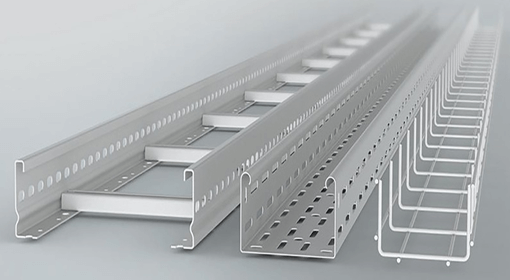
What do you need to know before choosing Cable Trays for Extreme Conditions?
Having cables around a construction site can be an extremely dangerous situation. This article will give you tips on how to choose Cable Trays For Extreme Conditions based on factors such as the type of construction, the height of the building, and your safety requirements.
The Cost of Cable Tray
There are many factors to consider before selecting cable trays for extreme conditions. Cost is always a consideration, but the type of cable tray and the specific application also affect the price.
One factor that affects the cost of a cable tray is the size. The larger the tray, the more expensive it will be. Tray sizes range from 3 inches by 3 inches up to 96 inches by 96 inches. The larger the tray, the more space it will require and the more expensive it will be.
Another factor that affects the cost of a cable tray is the material. Cable trays made of metal or plastic are more expensive than those made of wood. Metal cable trays are stronger and have a longer life expectancy than plastic cable trays, but they are also heavier. Plastic cable trays are less expensive, but they may not last as long as metal cable trays and they may not be as strong.
The type of application also affects the cost of a cable tray. Cable trays used in broadcast or transmission applications are more expensive than those used in telecommunications applications. Cable trays used in telecommunications applications are more expensive than those used in military or aerospace applications.
Cable Tray vs. Pipe
When it comes to extreme conditions, the choice between an FRP cable tray and a pipe can come down to a few key factors.
The first consideration is whether you need the extra space a cable tray offers. A cable tray can hold more cables than a pipe, making it easier to organize and manage your wiring.
Second, consider the durability of your cables. A cable tray is designed to protect your cables from damage, both during transport and during use. A pipe, on the other hand, may not be as sturdy in this regard and may not be able to handle heavy loads very well.
Finally, think about how easy it will be to access your wires when you need them. A cable tray will typically have openings at both ends so that you can easily reach the connectors at either end. A pipe, on the other hand, often only has one opening at one end.
Purpose of Cable Tray
One of the most important factors to consider when choosing cable tray systems is the purpose they will be used for. Different cable tray systems are designed for different applications, and it is important to choose the right one for your needs.
Cable trays are typically used in extreme conditions, such as high altitudes or in environments where water or other contaminants are present. They should be chosen according to the application and the conditions under which they will be used. For example, a cable tray system designed for aerial applications may need to be waterproofed.
There are a few key considerations when choosing a cable tray system:
-The type of cables you will be using. Cable trays can accommodate a wide variety of cables, including coaxial cables and fibre-optic cables.
-The size and shape of the cables. Cable trays should fit the specific cables they are intended to hold without interference or excessive strain.
-The environment in which the cable Tray will be used. Cable trays should be resistant to moisture and corrosion, and should have suitable temperature ranges.
What is the best Cable Tray for your project ?
There is no one-size-fits-all answer to this question, as the best cable tray for a particular project will depend on the specific requirements of that project. However, here are some general tips that should help you choose the right cable tray for your needs:
- Choose a cable tray that is wide enough to accommodate the largest cables and components you plan to use.
- Make sure the cable tray has enough clearance between the cables and the sides of the tray so they don’t clog up or touch each other.
- Choose a cable tray that is easy to clean and resistant to corrosion.
Safety Considerations when installing Cable Trays
When installing cable trays in extreme conditions, it is important to keep safety in mind. First and foremost, make sure that the cables are properly secured to the tray and that the installation is stable. Additionally, be sure to inspect the cables regularly for signs of wear or damage. Finally, always use caution when working near power lines or other potential sources of electromagnetic interference.

0 comments
Write a comment